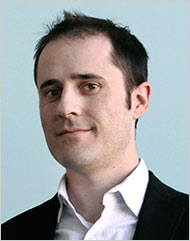(p. 36) For centuries, certainly ever since Immanuel Kant called the hand the window on the mind,” philosophers have been pondering the very complex way in which the human hand is related to the human mind. Modern neuroscience and evolutionary biology have confirmed the existence of what the Scottish physician and theologian Charles Bell called the intelligent hand. Stephen Pinker of Harvard even argues that early humans’ intelligence increased partly because they were equipped with levers of influence on the world. namely the grippers found at the end of their two arms. We now know that the literally incredible amount of sensitivity and articulation of the human hand, which has increased at roughly the same pace as has the complexity of the human brain, is not merely a product of the pressures of natural selection, butt an initiator of it: The hand has led the brain to evolve just as much as the brain has led the hand. The hands of a pianist, or a painter, or a sushi chef, or even, as with Thomas New-(p. 37)comen, hands that could use a hammer to shape soft iron, are truly, in any functional sense, “intelligent.”
This sort of tactile intelligence was not emphasized in A. P. Usher’s theory of invention, the components of which he filtered through the early twentieth-century school of psychology known as Gestalt theory, which was preeminently a theory of visual behavior. The most important precepts of Gestalt theory (to Usher, anyway, who was utterly taken with their explanatory power) are that the patterns we perceive visually appear all at once, rather than by examining components one at a time, and that a principle of parsimony organizes visual perceptions into their simplest form. Or forms; one of the most famous Gestalt images is the one that can look like either a goblet or two facing profiles. Usher’s enthusiasm for Gestalt psychology explains why, despite his unshakable belief in the inventive talents of ordinary individuals, he devotes an entire chapter of his magnum opus to perhaps the most extraordinary individual in the history of invention: Leonardo da Vinci.
Certainly, Leonardo would deserve a large place in any book on the history of mechanical invention, not only because of his fanciful helicopters and submarines. hut for his very real screw cutting engine, needle making machine, centrifugal pumps, and hundreds more. And Usher found Leonardo an extraordinarily useful symbol in marking the transition in mechanics from pure intuition to the application of science and mathematics.
But the real fascination for Usher was Leonardo’s straddling of two worlds of creativity, the artistic and the inventive. No one, before or since, more clearly demonstrated the importance to invention of what we might call “spatial intelligence”; Leonardo was not an abstract thinker of any great achievement, nor were his mathematical skills, which he taught himself late in life, remarkable. (p. 38) His perceptual skills, on the other hand, developed primarily for his painting, were extraordinary, but they were so extraordinary that Usher could write, “It is only with Leonardo that the process of invention is lifted decisively into the field of the imagination. . . . “
Source:
Rosen, William. The Most Powerful Idea in the World: A Story of Steam, Industry, and Invention. New York: Random House, 2010.




